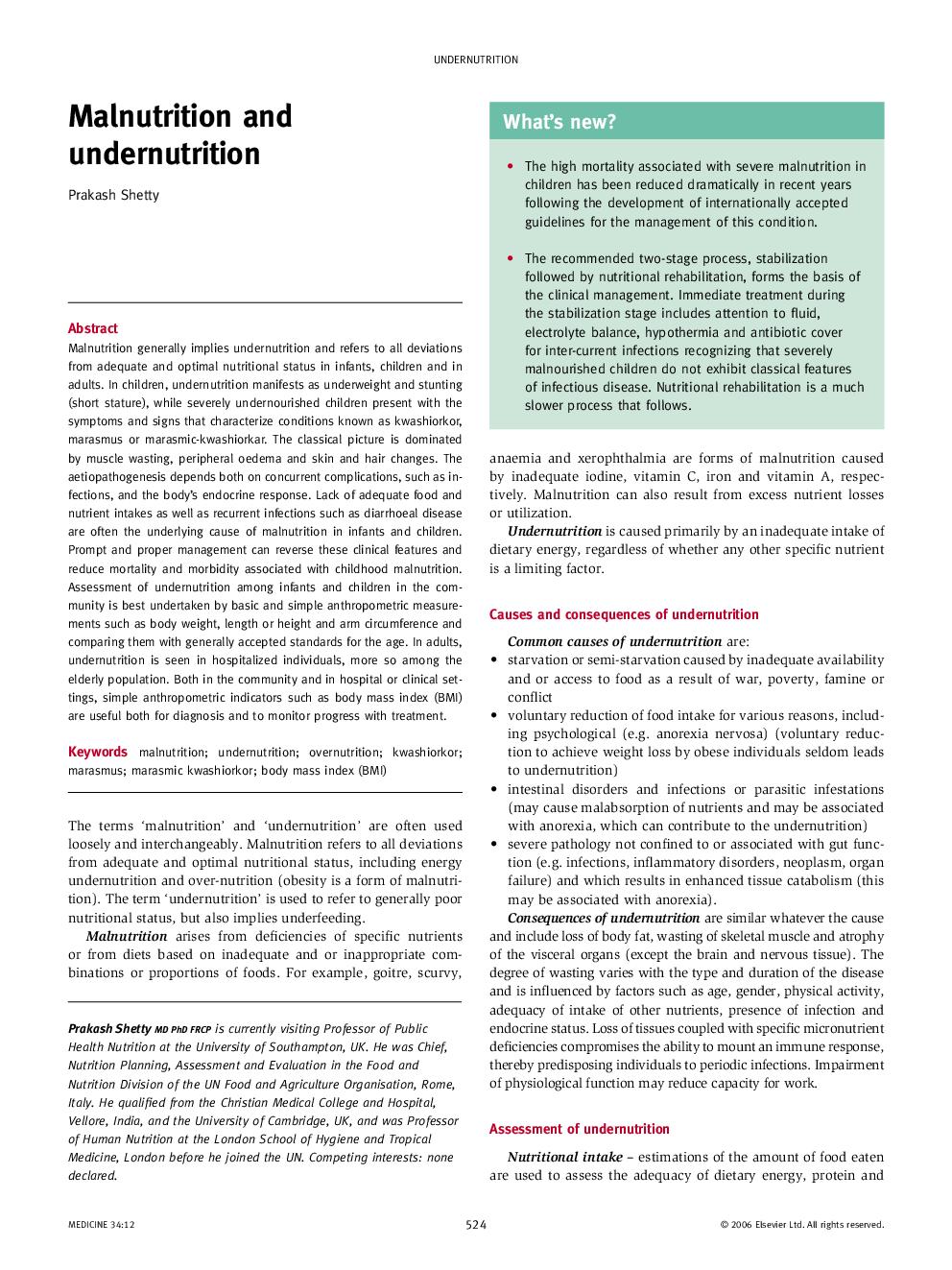| Article ID | Journal | Published Year | Pages | File Type |
|---|---|---|---|---|
| 3805420 | Medicine | 2006 | 6 Pages |
Malnutrition generally implies undernutrition and refers to all deviations from adequate and optimal nutritional status in infants, children and in adults. In children, undernutrition manifests as underweight and stunting (short stature), while severely undernourished children present with the symptoms and signs that characterize conditions known as kwashiorkor, marasmus or marasmic-kwashiorkar. The classical picture is dominated by muscle wasting, peripheral oedema and skin and hair changes. The aetiopathogenesis depends both on concurrent complications, such as infections, and the body’s endocrine response. Lack of adequate food and nutrient intakes as well as recurrent infections such as diarrhoeal disease are often the underlying cause of malnutrition in infants and children. Prompt and proper management can reverse these clinical features and reduce mortality and morbidity associated with childhood malnutrition. Assessment of undernutrition among infants and children in the community is best undertaken by basic and simple anthropometric measurements such as body weight, length or height and arm circumference and comparing them with generally accepted standards for the age. In adults, undernutrition is seen in hospitalized individuals, more so among the elderly population. Both in the community and in hospital or clinical settings, simple anthropometric indicators such as body mass index (BMI) are useful both for diagnosis and to monitor progress with treatment.
